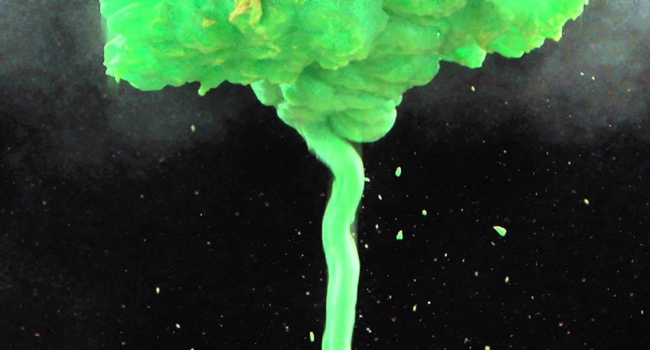15. The Who – The Who Sell Out (1967)
 The concept album is a bit of a sticky wicket. The restraint and discipline required for its creation is diametrically opposed to the inclinations of the hedonistic man-children who opt to create them. 1967 to 1968 was a make or break period for rock ‘n’ roll conceptualists. The Beach Boys’ Smile was shelved pending Brian Wilson’s return to sanity, Paul McCartney’s old-timey variety show theme for Sgt Pepper’s Lonely Hearts Club Band was trumped by practicality and both The Small Faces’ Ogden’s Nut Gone Flake and The Pretty Things’ S.F. Sorrow, although successfully realized, resulted in the disunity and eventual collapse of the respective bands.
The concept album is a bit of a sticky wicket. The restraint and discipline required for its creation is diametrically opposed to the inclinations of the hedonistic man-children who opt to create them. 1967 to 1968 was a make or break period for rock ‘n’ roll conceptualists. The Beach Boys’ Smile was shelved pending Brian Wilson’s return to sanity, Paul McCartney’s old-timey variety show theme for Sgt Pepper’s Lonely Hearts Club Band was trumped by practicality and both The Small Faces’ Ogden’s Nut Gone Flake and The Pretty Things’ S.F. Sorrow, although successfully realized, resulted in the disunity and eventual collapse of the respective bands.
That’s what you get when you try to swim in Pete Townshend’s end of the pool. Sandwiched between the tongue and cheek mini-opera of “A Quick One, While He’s Away” and the grandiose triumph of Tommy, The Who Sell Out may have been only modestly cohesive (with intermittent product jingles, snippets of station I.D.s and public service announcements hinting at its pirate radio spoof premise), but it was still entertaining, and nobody got hurt. Gone were the aggressive micro-bursts of the past. Songs like “Our Love Was”, “I Can See For Miles” and “Armenia City In The Sky” were looser, more expansive. The guitar tones had grown larger and the vocals that were now split between Townshend and Roger Daltry had become more emotive. It was as if the band could see the stages of Monterey and Woodstock and the belated embrace of America just ahead in the distance.
14. The Kinks – Face To Face (1966)
 Ray Davies (like Paul McCartney) grew up listening to the innocuously traditional pop of the BBC Light Programme, his sponge-like little head absorbing every nuance of his parents’ and grandparent’s’ music. No longer able or willing to suppress these influences, in 1965 Davies’ songwriting began evolving into something more indebted to Tin Pan Alley than Chuck Berry. With the release of the single “A Well Respected Man,” followed shortly by “Dedicated Follower Of Fashion,” he synthesized the then current strains of pop music with the sepia tinged nostalgia of vaudeville, and began his lengthy commentary on English classist pretension.
Ray Davies (like Paul McCartney) grew up listening to the innocuously traditional pop of the BBC Light Programme, his sponge-like little head absorbing every nuance of his parents’ and grandparent’s’ music. No longer able or willing to suppress these influences, in 1965 Davies’ songwriting began evolving into something more indebted to Tin Pan Alley than Chuck Berry. With the release of the single “A Well Respected Man,” followed shortly by “Dedicated Follower Of Fashion,” he synthesized the then current strains of pop music with the sepia tinged nostalgia of vaudeville, and began his lengthy commentary on English classist pretension.
Face To Face, along with the following three Kinks’ releases, was a byproduct of this newly adopted motif. Not as immediately accessible as the power-chord blasting, heavy-hooked singles of the past, the songs on Face To Face grow on you gradually, relying on the listeners’ intellectual participation, rather than a visceral response, which makes them ultimately more enduring. Lyrically the album serves as the master’s class of bourgeois character studies that Paul Weller and Damon Albarn were educated in. On every track Ray Davies’ wry smile and cocked eyebrow are almost audible. Eventually becoming the profligate wastrels that the band once skewered, in 1966 The Kinks still thought of themselves as working-class Muswell Hill yobs taking the piss out of posh strangers who wandered into their pub.
13. The Rolling Stones – Aftermath (U.S. Version) (1966)
 The Rolling Stones early catalogue is a bit messy. When discussing a particular album you need to distinguish between the American and U.K. versions of some, while others were compiled for the U.S. market alone. A similar conundrum presents itself with nearly all British bands marketed in the States prior to 1967. This redundancy was prompted by the British music industry’s sentiment that it was a shabby business practice to include singles that had already been released on full-length records. American record companies had no such compunction, and they wanted the hits. In this rare instance I will side with the profit-mongers. The U.S. version of Aftermath, although three tracks shorter and missing “Out Of Time,” opens with the ominously rockin’ “Paint It Black” and excludes the U.K. version’s interminable eleven and a half minute blues jam, “Going Home.”
The Rolling Stones early catalogue is a bit messy. When discussing a particular album you need to distinguish between the American and U.K. versions of some, while others were compiled for the U.S. market alone. A similar conundrum presents itself with nearly all British bands marketed in the States prior to 1967. This redundancy was prompted by the British music industry’s sentiment that it was a shabby business practice to include singles that had already been released on full-length records. American record companies had no such compunction, and they wanted the hits. In this rare instance I will side with the profit-mongers. The U.S. version of Aftermath, although three tracks shorter and missing “Out Of Time,” opens with the ominously rockin’ “Paint It Black” and excludes the U.K. version’s interminable eleven and a half minute blues jam, “Going Home.”
Aftermath was the Rolling Stones’ first album of completely original material, and only two of the tracks were throwbacks to their “too-bluesy-for-the-room” first phase. The apprentice Rolling Stones fan would be best served by postponing the purchase of the band’s first few records, dishing out $40 for The Singles Collection: The London Years Box Set and beginning their album collection with Aftermath. Occasionally darkened by the misogyny du jour, Aftermath has otherwise aged considerably well. Typically gritty little ditties are contrasted by Elizabethan minstrelsy and pure pop confection. Aftermath brims with the confidence of a band that no longer has to sing for its meals.
12. The Yardbirds – The Yardbirds (Roger The Engineer) (1966)
 The Yardbirds’ testosterone fueled genus of psychedelia is a welcomed respite from the effete rainbows and unicorns dribble that was prevalent in the mid-to-late ‘60s. In an island country seriously in danger of sinking under the combined weight of its great guitarists, Jeff Beck, undaunted by the hyperbolic misevaluation that his predecessor, Eric Clapton, was “God”, established himself as the greatest.
The Yardbirds’ testosterone fueled genus of psychedelia is a welcomed respite from the effete rainbows and unicorns dribble that was prevalent in the mid-to-late ‘60s. In an island country seriously in danger of sinking under the combined weight of its great guitarists, Jeff Beck, undaunted by the hyperbolic misevaluation that his predecessor, Eric Clapton, was “God”, established himself as the greatest.
The Yardbirds’ 1966 self-titled release, more commonly referred to as Roger The Engineer in reference to rhythm guitarist Chris Dreja’s less than flattering cover art cartoon of recording engineer Roger Cameron, was the band’s first to be comprised of solely original material and Beck’s first with the band. His lead guitar work, not content with being confined to the conventional perimeters of the middle eighth, roams freely, whaling with feedback and slicing its way through the guts of the songs. The reissue of the album includes the minacious single “Happenings 10 Years Time Ago” and its Chuck Berry beholden B-side, “Psycho Daisies” (both featuring Jimmy Page doing bendy things in the background).
The band may have been reluctant to divorce themselves completely from their blues underpinnings, but the tracks “Lost Woman,” “The Nazz Are Blue” and “Rack My Mind” are a rapacious brutalization of the form, presaging the forthcoming era of blues-rock without all of its stodgy guitar wankery. Unjustly undervalued lead singer, Keith Relf shines with his Sinatra-like crooning on the album’s best track, the snake-charmer flute riffed “Over, Under, Sideways, Down”, and with the proto-Ian Dury Englishness of “Farwell”. Aside from the Les Paul (the man, not the guitar) inspired jazziness of “Jeff’s Boogie,” Roger The Engineer is a signpost to the many divergent paths that rock ‘n’ roll would take in the future. This was a new creation and God was not required.
11. The Move – The Move (1968)
 For three decades, The Move’s debut album was one of those esoteric artifacts, spoken of in hushed tones by involuntarily asexual U.S. pop nerds. The granddaddy of all unjustly overlooked ’60s psyche-pop masterworks, The Move was just too schizoid, too polished, too English for America back in 1968. The album was like a battle of the bands with only The Move competing. Four different lead singers and 12 songs that teetered between The Who’s attack, Beatlesque melodies, The Hollies’ 3-part harmonies and The Kink’s nationalism resulted in them sounding like everyone and no one else.
For three decades, The Move’s debut album was one of those esoteric artifacts, spoken of in hushed tones by involuntarily asexual U.S. pop nerds. The granddaddy of all unjustly overlooked ’60s psyche-pop masterworks, The Move was just too schizoid, too polished, too English for America back in 1968. The album was like a battle of the bands with only The Move competing. Four different lead singers and 12 songs that teetered between The Who’s attack, Beatlesque melodies, The Hollies’ 3-part harmonies and The Kink’s nationalism resulted in them sounding like everyone and no one else.
This identity crisis was further compounded by their choice and interpretations of cover material: Eddie Cochran’s “Weekend” could have been called “mockabilly” with a dead-on vocal imitation of the original, “Zing! Went The Strings Of My Heart,” which nearly lampooned the baritone of The Coasters doo-wop rendition, and the West Coast boogie of Moby Grape’s barely one year old “Hey Grandma” confused the set even further. But what’s the harm of school children copying all of their classmate’s homework if they end up learning the material in the process? What this record may lack in originality or cohesion it more than makes up for with the sheer quality of material. These are great songs, and The Move was a great band. Who needs America anyway?
Be sure to read about records 16-20, 21-25 and stay tuned for records 6-10 and 1-5.



